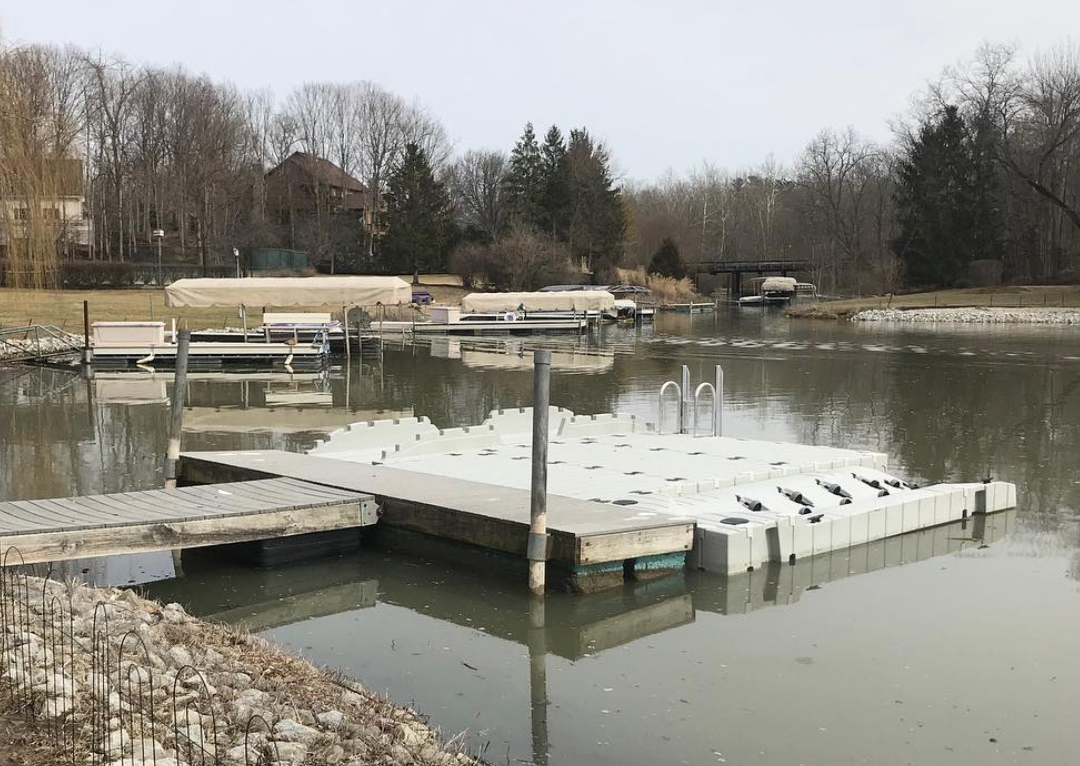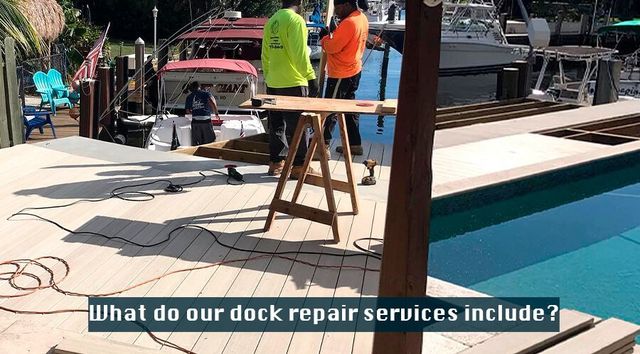Common Issues That Lead to Costly Dock Repairs
Common Issues That Lead to Costly Dock Repairs
Blog Article
Efficient Dock Repair Service Techniques: Making Sure Structural Stability
Making sure the architectural stability of docks with effective repair methods is vital for the durability and security of marine centers. This entails a multi-faceted strategy beginning with extensive examinations utilizing innovative innovations like sonar equipment and from another location ran automobiles (ROVs) to discover both noticeable and hid damages. Subsequently, selecting the appropriate repair service materials, such as corrosion-resistant alloys and composite materials, is essential for sturdiness. Structural support techniques, including the execution of cross-bracing systems and load-distribution plates, play a crucial role in mitigating stress and anxiety factors. Nonetheless, the relevance of these techniques comes to be apparent when exploring innovative repair work approaches and preventative maintenance strategies.
Analyzing Dock Damage
Examining dock damages is a vital very first step in guaranteeing the structural integrity and security of any kind of docking facility. This initial examination entails a comprehensive evaluation to determine both visible and concealed problems. Key aspects to analyze include the dock's foundation, pilings, outdoor decking, and hardware. Each element should be inspected for indicators of wear, rot, deterioration, or various other kinds of destruction that could compromise the architectural stability.
Architectural designers or certified examiners normally do these evaluations utilizing specialized strategies and tools. For example, underwater examinations may utilize sonar equipment or remotely operated lorries (ROVs) to spot submerged damage. Above water, aesthetic inspections are enhanced by utilizing wetness meters and other analysis tools to reveal underlying problems not instantly visible to the nude eye.

Finding Fixing Materials
Selecting the suitable repair service products is a crucial action in the dock restoration process, one that directly influences the longevity and performance of the repaired structure. Material selection have to be driven by elements such as ecological problems, load-bearing needs, and compatibility with existing dock parts. For example, wood is a standard option for anchors as a result of its natural durability and visual charm. Picking the ideal type of wood, such as pressure-treated lumber or normally rot-resistant varieties like cedar or teak wood, is important to hold up against marine atmospheres.
In enhancement to wood, composite products are significantly popular as a result of their longevity and reduced upkeep requirements. Compounds, usually made from a blend of plastic and timber fibers, offer superb resistance to rot, bugs, and UV damages. For metal anchors, picking corrosion-resistant alloys such as galvanized steel or marine-grade light weight aluminum is necessary to prevent rust and make certain structural honesty in saline water conditions.
Epoxy resins and marine-grade sealants are indispensable for repairing splits and securing joints, offering a water resistant obstacle and enhancing the dock's general toughness. By meticulously selecting top quality products, dock fixings can achieve lasting outcomes, therefore safeguarding against future deterioration and making sure secure, reliable usage.
Architectural Support Techniques
Effective structural reinforcement methods are important in making certain the security and longevity of dock repairs. One basic method involves using steel or composite support bars (rebar) within concrete frameworks. Rebar provides additional tensile strength, preventing cracks and distributing lots extra equally. This approach is specifically reliable for anchors subjected to heavy tons or severe environmental conditions.
Another important technique is the application of fiber-reinforced polymers (FRP) These products use high strength-to-weight proportions and exceptional resistance to corrosion, making them suitable for strengthening concrete or wooden anchors. FRP can be used in strips or sheets and bound with epoxy materials to boost architectural stability.
Bracing and securing systems likewise play a critical function in structural support. Cross-bracing, utilizing steel or wooden beams, can neutralize side forces, lowering persuading and movement. Securing systems, such look at these guys as helical piers or driven piles, supply a stable structure by transferring lots to deeper, extra steady dirt layers.
Finally, the combination of load-distribution plates can aid distribute weight extra uniformly throughout the dock's surface, mitigating local stress factors. These techniques collectively make sure that docks continue to be safe and robust, with the ability of enduring the roughness of their operational atmosphere.
Advanced Fixing Techniques

Another advanced technique involves underwater welding, which allows for repair work to be carried out without the requirement to dewater the area. This method is particularly beneficial for attending to structural issues in submerged dock components, ensuring marginal disruption to operations. Enhanced welding strategies, paired with robot systems, provide precision and reliability, therefore expanding the life expectancy of the dock.
Furthermore, cathodic protection systems are implemented to prevent deterioration in metal dock structures. By using sacrificial anodes or satisfied existing systems, these methods efficiently mitigate the electrochemical procedures that cause material damage.
Last but not least, advanced monitoring modern technologies, such as architectural health surveillance (SHM) systems, supply real-time data on the problem of dock read here structures. These systems enable aggressive maintenance and prompt interventions, inevitably making sure the long-term architectural stability of the dock.
Maintenance and Avoidance
Maintenance and avoidance are fundamental ideas that underpin the longevity and safety and security of dock structures. Normal evaluations are paramount, enabling for early detection of damage, prospective weak points, and environmental effects. A proactive technique, entailing routine look for corrosion, rot, and architectural changes, reduces pricey repairs and extends the dock's functional life.
Precautionary measures must consist of applying protective coatings to metal elements to defend against corrosion and making use of treated wood to withstand degeneration. Additionally, making sure correct drainage and ventilation can protect against water accumulation, which is a typical source of structural deterioration. Including quality materials and adhering to more helpful hints maker standards throughout construction and repair work phases additionally play crucial functions in enhancing durability.

Educating workers in dock maintenance best practices makes certain regular application of safety nets. Leveraging technological advancements, such as drones for inspections and sensing units for real-time surveillance, can even more enhance upkeep efforts. By prioritizing upkeep and prevention, dock owners can make certain architectural stability, operational safety and security, and cost-efficient administration over the dock's lifespan.
Conclusion
In verdict, maintaining the structural honesty of aquatic facilities requires detailed dock fixing techniques. Advanced repair work methods, paired with normal maintenance practices, make sure the dock continues to be operational and risk-free under diverse ecological problems.
Making certain the architectural integrity of docks with efficient repair service strategies is extremely important for the long life and safety of aquatic facilities.Picking the ideal repair work products is a critical action in the dock reconstruction procedure, one that straight affects the long life and efficiency of the fixed framework.Effective structural support techniques are critical in making sure the stability and long life of dock fixings. By focusing on maintenance and prevention, dock owners can ensure architectural integrity, functional safety and security, and cost-efficient monitoring over the dock's life expectancy.
In final thought, preserving the structural honesty of aquatic facilities necessitates comprehensive dock fixing strategies.
Report this page